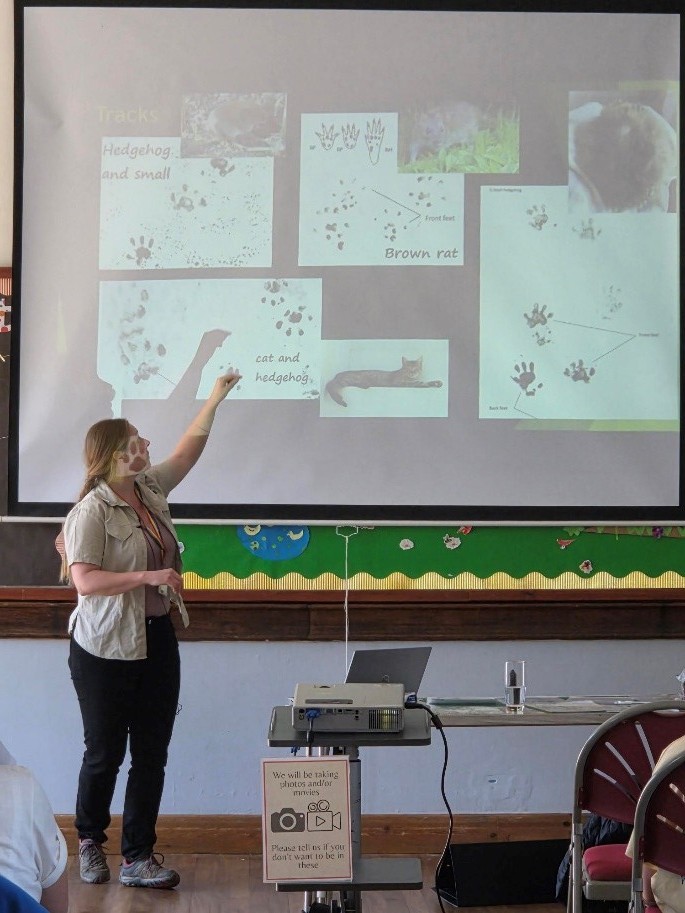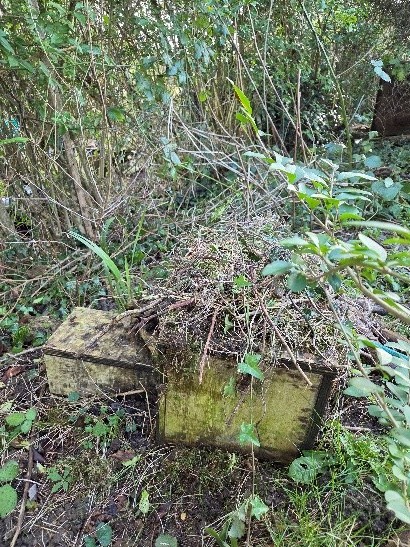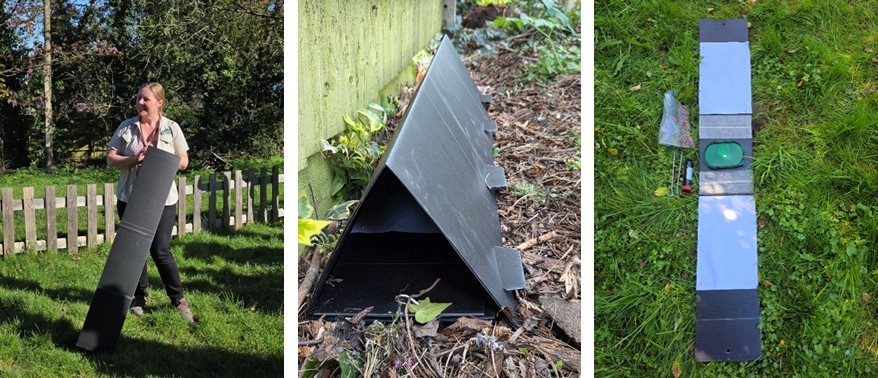A joint collaboration between All Saints Church, Onslow Village Residents Association and Dr Tara Pirie of the University of Surrey.
Sunday 6th April saw the launch of our Hedgehog Highways collaboration between All Saints Eco Group, Onslow Village Residents Association (OVRA) and Dr Tara Pirie of the University of Surrey.
What’s it about ...
The aim of the initiative is to encourage our local community to help hedgehogs by creating hedgehog friendly habitats within our surrounding neighbourhood and parish.
The launch event …
 Dr Pirie, who is a lecturer in ecology and conservation, and Chair of the University’s Hedgehog Working Group, gave a talk in the church hall on how we can help save hedgehogs. The event was well attended and was followed afterwards by a demonstration on the Orchard of how to set up a mammal tracking tunnel for monitoring hedgehog activity.
Dr Pirie, who is a lecturer in ecology and conservation, and Chair of the University’s Hedgehog Working Group, gave a talk in the church hall on how we can help save hedgehogs. The event was well attended and was followed afterwards by a demonstration on the Orchard of how to set up a mammal tracking tunnel for monitoring hedgehog activity.
Dr Pirie began her talk by discussing the current very poor status of hedgehogs – which is not good. Since 2000 there has been a 75% reduction in rural hedgehog populations and in 2020 hedgehogs were added to the red list of threatened species. They are now considered vulnerable to extinction in Britain.
She spoke of the threats to hedgehogs – particularly in rural areas with habitat loss from development, fewer hedgerows (a habitat where hedgehogs would typically forage and nest), the use of pesticides, heavy machinery and busy roads. These threats continue into our suburban garden environments with the use of garden pesticides, strimmers, bonfires, and impermeable barriers that constrain foraging ranges ie fences without gaps.
How can we help …
Dr Pirie explained how we can make our garden habitats more wildlife and hedgehog friendly with small improvements: the addition of a drinking station (a shallow dish of water), creating log piles and leaf piles (a great place to shelter), and adding hedgehog houses.
 What do hedgehogs eat …
What do hedgehogs eat …
A hedgehog’s diet includes slugs, earthworms, beetles, millipedes and caterpillars so creating a wild space where they can forage is a great way to ensure they can feed. In addition, planting wild flowers and incorporating bug houses and log piles will encourage more insects and beetles into your garden.
A key fact: Hedgehogs are lactose intolerant – so don’t put out milk – just water, and if you’d like to supplement their food on the colder autumn days before they go into hibernation go for a meat-based wet dog or cat food (in a shallow dish); never bread as this has no nutritional value and just fills their stomachs up.
Hedgehog Highways …
Most importantly, we learnt how we can help hedgehogs move between areas. Hedgehogs like to roam, and on average can cover a distance of 2km on a single night. So for urban hedgehogs, we need to create ‘Hedgehog Highways’ by linking up our gardens. We can do this by ensuring we have hedgehog sized holes (13x13cm) in our garden boundaries eg by cutting a hole in fences that lack a natural hole in or under them. You could also consider ramps in a tiered garden and where levels are raised between one garden and the next, as hedgehogs (with short legs) aren’t great at climbing.
Monitoring hedgehog activity …
Dr Pirie and her students have been monitoring hedgehog activity on the Surrey University campus via the use of mammal tracking tunnels. There is good news – hedgehog numbers appear to have increased since the university began looking for their tracks in 2020. Additionally, the university is part of a nationwide Hedgehog Friendly Campus programme (with gold status), helping to make safer hedgehog-friendly environments.
Dr Pirie finished her talk on the Orchard where she demonstrated suitable places to position a tracking tunnel – somewhere flat, so you can peg it down, and ideally next to a fence or hedge as these are boundaries where hedgehogs are most likely to be travelling or nesting (hedge hogging).
If you would like to monitor hedgehog activity in your garden All Saints and OVRA have purchased a set of 10 tracking tunnels. These tunnels can now be borrowed for a two-week period by contacting OVRA info@ovra.org.uk. The tunnels should be left outside for one week and checked daily for mammal activity (mammals entering the tunnel will leave footprints). The tunnel will come with a packet of hedgehog food, pot of animal-friendly ink, instructions, and a common mammal footprint identification card.

How to report a hedgehog sighting …
You can report sightings to the British Hedgehog Preservation Society’s BIG Hedgehog Map by going online to Hedgehog Street www.hedgehogstreet.org and clicking on the link to ‘Home of the BIG Hedgehog Map’ or go directly to: bighedgehogmap.org
Additionally, Dr Pirie has a survey taking place at the university and would be delighted to include our area. There is a QR code available on the OVRA website: ovra.org.uk (click on the Hedgehog Highways Project link).
Since the talk we have had confirmed hedgehog footprints and sightings!